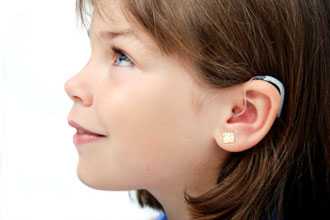Key findings: Childhood vision impairment, hearing loss and co-occurring autism spectrum disorder

The Disability and Health Journal has published a new study: “Childhood vision impairment, hearing loss and co-occurring autism spectrum disorder.” This study is based on information from the Metropolitan Atlanta Developmental Disabilities Surveillance Program (MADDSP). The study found that autism spectrum disorder was more common among children who also have vision impairment or hearing loss compared with the overall population of 8-year-old children with an autism spectrum disorder in metro Atlanta. More needs to be done to ensure that all children with autism spectrum disorder are identified as early as possible so that they can get the help they need. We’ve included more main findings below. The abstract is available online.
Main findings:
- About 1 in 830 children in metro Atlanta has vision impairment.
- Approximately 7% of the children with vision impairment also had autism spectrum disorder compared with about 1% of children in metro Atlanta with autism spectrum disorder overall.
- Compared to children with vision impairment without an autism spectrum disorder, the children with vision impairment and autism spectrum disorder were significantly more likely to:
- Be born too early
- Be born too small
- Have intellectual disability
- The children with vision impairment and autism spectrum disorder were first evaluated by a community provider at about the same age as children without vision impairment. However, children with vision impairment were diagnosed with autism spectrum disorder later than those without vision impairment (6 years and 7 months compared to 4 years and 8 months).
"Learn the Signs. Act Early” Program
CDC’s “Learn the Signs. Act Early” program has resources for healthcare providers, including screening tools and free educational materials to give to parents.
Learn more at www.cdc.gov/ActEarly
- About 1 in 770 children in metro Atlanta has hearing loss.
- About 6% of the children with hearing loss also had autism spectrum disorder compared with about 1% of children in metro Atlanta with autism spectrum disorder overall.
- Compared to children with hearing loss without an autism spectrum disorder, the children with hearing loss and autism spectrum disorder were more likely to:
- Be boys
- Have intellectual disability and/or cerebral palsy
- The children with hearing loss and autism spectrum disorder were first evaluated by a community provider earlier than children without hearing loss (3 years and 4 months compared with 4 years and 2 months, respectively). However, both groups were diagnosed with autism spectrum disorder at about the same age (4 years and 7 months).
Parents
If you’re the parent of a child with vision impairment or hearing loss and you think your child might have autism spectrum disorder, don’t wait. Talk to your child’s doctor and share your concerns.
Find tips on sharing concerns about your child’s development at www.cdc.gov/ActEarly
What is the take home message?
- This study highlights the need for:
- Greater awareness of the signs and symptoms of autism spectrum disorder among doctors and other providers serving children with vision impairment or hearing loss;
- More tools that can be used to diagnose autism spectrum disorder among children with vision impairment or hearing loss; and
- Early treatment and improved services to address autism spectrum disorder among children with vision impairment or hearing loss.
- This study found that certain factors, such as being born too early, increase the chance of a child having both autism spectrum disorder and either vision impairment or hearing loss. These findings could help guide future research.
Citation: Kancherla V, Van Naarden Braun K, Yeargin-Allsopp M. Childhood vision impairment, hearing loss and co-occurring autism spectrum disorder. Disability and Health Journal. July 2013.
- Page last reviewed: February 12, 2015
- Page last updated: February 12, 2015
- Content source:


 ShareCompartir
ShareCompartir